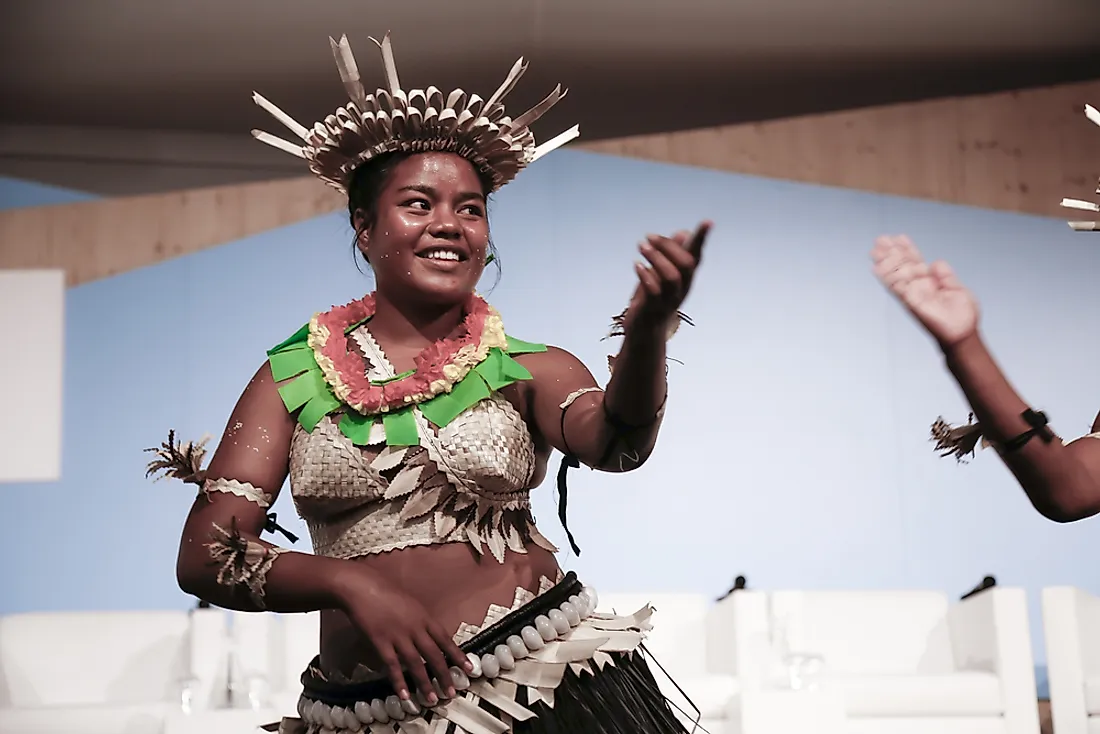The Ethnic Composition Of Kiribati

Kiribati is a sovereign nation found in Micronesia, particularly in the central Pacific Ocean. According to estimates of 2015, the country had a population of 110,000 inhabitants and more than half of them inhabit the Island of Tarawa, which is an atoll. The country is made up of about 32 atolls and reef islands, and it includes the Island of Banaba which is a raised coral island. The combined area of Kiribati spans an area of 310 square miles, and they are spread over an area that covers 1.3 million square miles. Kiribati attained its independence from Britain in 1979. The I-Kiribati is by far the largest ethnic group in the country accounting for about 96.2% of the country's population, while I-Kiribati mixed account for 1.8% of the population. Tuvaluans in Kiribati account for 0.2% while others account for 1.8% of the country's population.
I-Kiribati Ethnic Group
The I-Kiribati people are native people of the island nation of Kiribati, and ethnically they are Micronesians. They account for 96.2% of the total population in the country. According to archaeological evidence, Austronesians were the first people to inhabit the Island of Kiribati several thousand years ago. In the 14th century, Samoans, Tongans, and Fijians invaded the Island resulting in a new ethnic diversity. The I-Kiribati speaks Gilbertese language, although English is the official language in the island nation of Kiribati and it is taught in both primary and secondary schools. Although I-Kiribati language is known as Gilbertese. It is a Micronesian language that belongs to the Austronesian language family. The language is relatively uniform and almost similar across the island. The language has two main dialects southern dialect and the northern dialects. The primary difference between the two dialects is the pronunciation of some words. For instance, the islands of Makin and Butaritari have their own dialect, which differs slightly from the standard I-Kiribati in both pronunciation and vocabulary. The language has borrowed heavily from the Polynesian languages, and it is quite distinct from the languages in the neighboring Marshall Islands and Tuvalu.
Other Ethnic Groups
Other than I-Kiribati which is the largest ethnic group in the island nation, there are other minority groups such as I-Kiribati/mixed, and Tuvaluans, who collectively account for about 2% of the total population in the country. Other communities present in Kiribati include Chinese, Australians, New Zealanders, and Europeans. Although the people of the Island of Banabans are part of the I-Kiribati population, they are often regarded as a minority because they have a distinct history due to their displacement in the island by the colonialist to create room for mining of phosphate. The language of the few hundreds of people of Banaban Island is also slightly different from the main language of I-Kiribati or Gilbertese.
The Ethnic Composition Of Kiribati
| Rank | Ethnic group | Percentage of total population |
|---|---|---|
| 1 | I-Kiribati | 96.2% |
| 2 | I-Kiribati/mixed | 1.8% |
| 3 | Tuvaluan | 0.2% |
| 4 | other | 1.8% |











